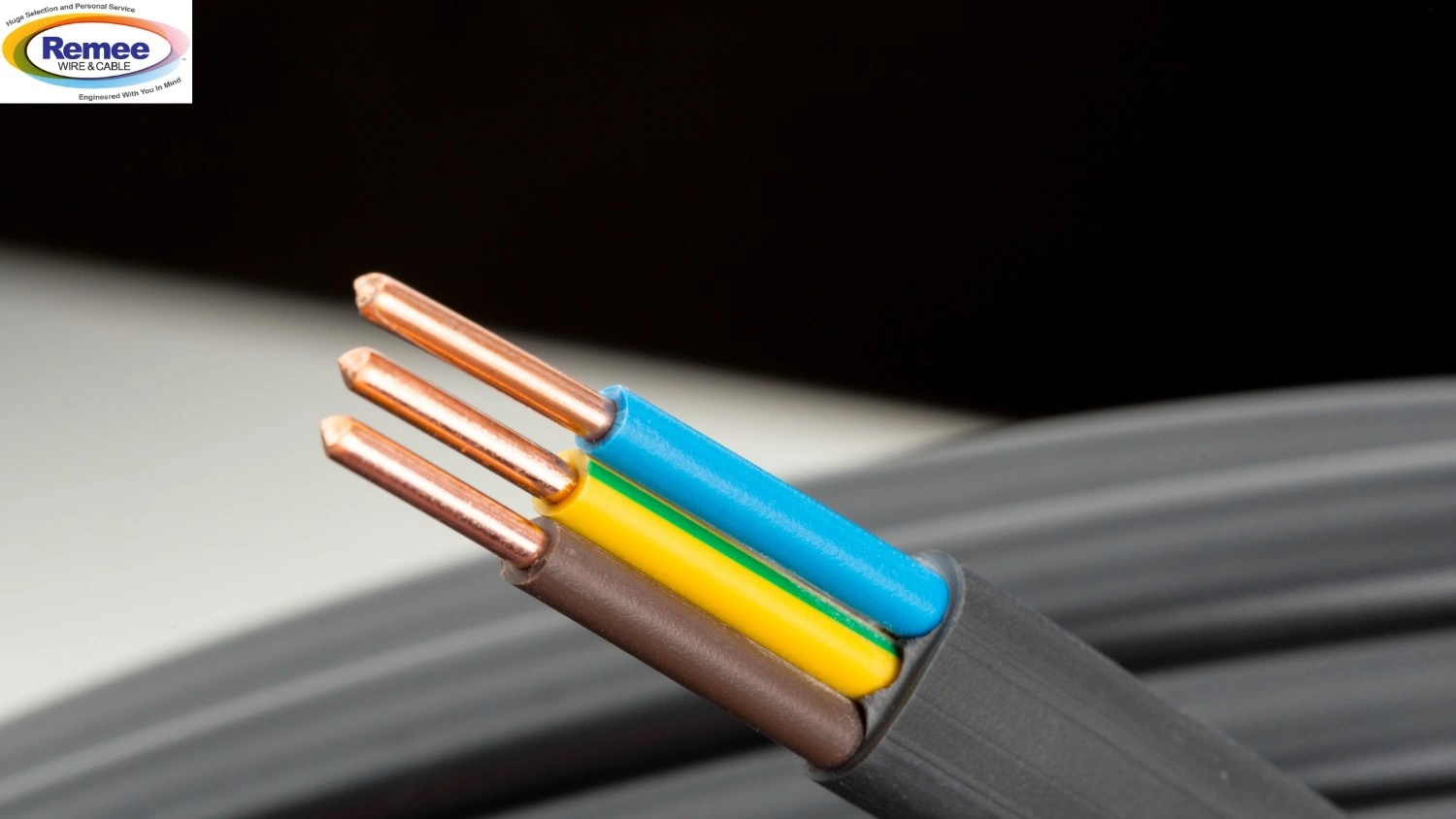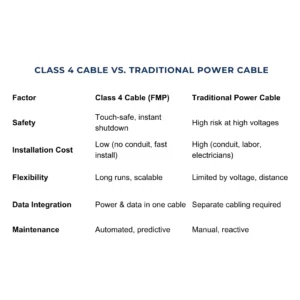
Class 4 Cable and the Rise of Fault Managed Power Systems in Industrial Automation
Summary: Discover how Class 4 cable and fault-managed power systems are revolutionizing industrial automation. This in-depth guide explores how these innovations deliver safer, more flexible, and cost-effective power distribution across vast industrial environments. Learn about the technology, real-world applications, and why these cables are fast becoming the backbone of next-generation automation.
Commercial building and industrial automation are evolving at lightning speed, demanding more power, longer cable runs, and uncompromising safety. Traditional wiring methods and legacy power cable solutions struggle to keep up, often resulting in higher costs, complex installations, and increased risk. Enter Class 4 cable and FMP systems: a new era of managed power that’s reshaping how factories, data centers, and smart buildings operate. But how do these systems work, and what makes them a game-changer for industrial automation?
What Are Fault-Managed Power Systems?
Fault-managed power systems (FMP), also known as Class 4 power, are advanced electrical distribution solutions designed to safely deliver high power levels over long distances without the risks associated with traditional high-voltage circuits. Unlike traditional circuits that limit power output or rely on overcurrent protection devices like circuit breakers, FMPS focuses on actively managing and limiting the energy delivered into a fault. This fundamental difference is what makes them inherently safer and more adaptable.
Key Features of Fault-Managed Power Systems:
- Continuous monitoring for faults in real-time
- Instant shutdown within milliseconds if a fault is detected
- Safe-to-touch conductors, even at higher voltages
- No power limit, capable of delivering hundreds or thousands of watts over long distances
FMPS not only limit fault energy for shocks that occur between the line conductor and earth, but they also limit the fault energy for line-to-line faults. This means if someone accidentally touches both lines, the system will react and limit the energy to the person.
Why Class 4 Cable is the Future of Power Distribution
This cable is specifically engineered to support FMP systems. With a voltage rating up to 450 VDC and robust insulation, these cables are designed for both safety and performance in demanding industrial environments. Unlike traditional power cables, Class 4 is lighter, easier to install, and does not require conduit, drastically reducing installation costs and complexity.
Need a tailored cable for your unique application? Request a new custom cable to get expert advice and bespoke solutions.
Types of Class 4 Cable:
- CL4P: Plenum-rated for air-handling spaces
- CL4R: Riser-rated for vertical runs
- CL4Z: LSZH insulation and jacket for wet location applications
- CL4: General purpose for other applications
How Class 4 Cable Works:
- Transmits high power and data over a single cable run
- Uses packetized energy delivery, checking for faults before each packet is sent
- Instantly stops power if a fault is detected, ensuring safety
Advantages of Class 4 Cable in Building and Industrial Automation
1. Unmatched Safety
- Instantaneous Fault Isolation: Power stops within milliseconds if a fault is detected, minimizing the risk of shock or fire even at high voltages.
- Safe Installation: Can be installed using low-voltage practices, without the need for certified electricians or heavy conduit.
- Touch-Safe: Conductors remain safe to touch, thanks to intelligent energy management.
2. Reduced Installation Costs
- No Conduit Needed: This cable type is lighter and does not require conduit, slashing material and labor costs.
- Single Cable for Power & Data: Combines both functions, reducing the number of cable runs and simplifying infrastructure.
- Faster Deployment: Streamlined installation processes mean shorter project timelines and lower total cost of ownership.
3. Flexibility & Scalability
- Longer Cable Runs: Delivers power over distances up to 2 kilometers, far surpassing Power over Ethernet (PoE) and traditional low-voltage systems.
- Easy Upgrades: As power needs grow, systems can be scaled without major infrastructure changes.
- Supports Diverse Applications: From powering sensors and factory machinery to lighting, security, and digital signage.
Real-World Use Case:
At Circa Resort & Casino Las Vegas, switching to a Class 4 system with digital electricity cables saved an estimated $2–3 million in construction costs, while enabling intelligent building features across a 1.2 million-square-foot tower.
How Managed Power Systems Enhance Commercial and Industrial Operations
This system has the ability to monitor, control, and optimize power delivery in real-time, enabling smarter, more resilient automation. Class 4 and FMP systems empower industries to:
- Minimize Downtime: Rapid fault detection and isolation keep critical systems running.
- Protect Equipment: Prevents damage from electrical faults or surges.
- Enable Predictive Maintenance: Data-driven insights allow for proactive system management.
Industries Benefiting from Managed Power:
- Manufacturing plants
- Data centers
- Smart buildings
- Healthcare facilities
- Transportation infrastructure
Want to ensure your next project is future-ready? Ask an expert for guidance on integrating managed power into your facility.

Where Class 4 Shines
- Factory Automation: Powering robotics, sensors, and control systems across sprawling production lines.
- Data Centers: Delivering managed power to remote servers, network equipment, and backup systems.
- Smart Buildings: Integrating lighting, climate control, and security devices for intelligent operation.
- Transportation: Reliable power for traffic signals, sensors, and communication systems along highways and railways.
Class 4 systems and fault-managed power systems are setting a new standard for safety, flexibility, and efficiency in industrial automation. Whether you’re upgrading an existing facility or designing a new one, adopting this technology can unlock significant cost savings, operational resilience, and future-ready scalability.
Request a new custom cable from Remee to match your unique project needs.
FAQ: Understanding Class 4 Cable and FMPS
Q1: What is the main difference between Class 4 and traditional electrical systems (Class 1, 2, 3)?
A: The core difference lies in safety and power delivery. Traditional Class 1 systems (like your home’s wiring) deliver high power but require extensive protective measures. Class 2 and 3 systems are power-limited for safety (e.g., PoE, limited to 100W). Class 4 systems are energy-limited through active fault management. This means they can deliver higher power (up to 2000 W and beyond) and over longer distances than Classes 2 and 3, with a comparable, or even superior, safety profile to Class 2, and without the stringent installation requirements of Class 1.
Q2: Can Class 4 systems replace all traditional wiring in a facility?
A: While Class 4 systems offer significant advantages for many applications, they are not necessarily a universal replacement for all traditional wiring. They excel in applications requiring high power over long distances, distributed power for smart devices, and enhanced safety. For very high-power motors or machinery, traditional AC wiring may still be necessary, but Class 4 can be an excellent complement for secondary power distribution and control systems.
Q3: Are Class 4 systems difficult to install or maintain?
A: On the contrary. One of the major benefits of Class 4 systems is their simplified installation. Due to their inherent safety, they often don’t require conduit and can be installed by low-voltage technicians, similar to data (Category) cabling. Maintenance is also streamlined, as active monitoring provides granular insights into power consumption and fault conditions, allowing for proactive intervention and reducing troubleshooting time.
Q4: How does Class 4 Cable contribute to sustainability in industrial automation?
A: Class 4 systems and FMPS contribute to sustainability in several ways:
- Material Reduction: Smaller cable gauge sizes and less need for conduit reduce material consumption and embodied carbon.
- Energy Efficiency: DC-based FMPS can be more efficient for many electronic loads, reducing conversion losses. The ability to monitor and control power consumption at a granular level also allows for better energy management and waste reduction.
- Extended Lifespan: Protecting equipment from electrical faults extends the lifespan of machinery, reducing the need for premature replacements and associated resource consumption.
For more information on Class 4 FMP cables, visit Remee’s Activate™ Power Distribution Cables page. You’ll find a broad selection of cables to suit most applications.